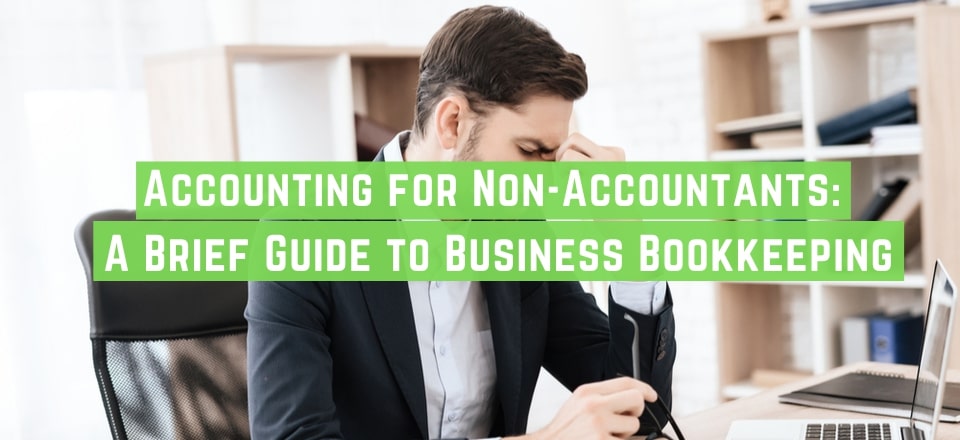Put your hand up if you run a business and wish you understood accounting better.
Can’t see your hand, but if you’re reading this, you’re probably looking for plain-English accounting explanations. You’ve come to the right place.
I’ll walk you through what you actually need to know about debits and credits, financial statements, and business costs. No accounting degree required.
Debits and Credits: The Real Story
Most people think debits are bad and credits are good. They’re wrong.
Debits and credits are just two sides of every transaction. When money moves in your business, you record both sides. This system is called double-entry bookkeeping. Even though 72% of Australian businesses use cloud accounting software that handles this automatically, you still need to understand how it works.
Here’s a real example. You sell a product for $50:
- Your cash increases by $50 (debit to asset account)
- Your sales revenue increases by $50 (credit to revenue account)
The journal entries look like this:
Cash Account
| Date | Description | Debit | Credit |
|---|---|---|---|
| Today | Sale #001 | $50 |
Revenue Account
| Date | Description | Debit | Credit |
|---|---|---|---|
| Today | Sale #001 | $50 |
Remember this rule: debits increase assets and expenses, but decrease liabilities, revenue and equity. Credits work opposite. That’s all there is to it.
Three Financial Statements That Matter
You only need to understand three financial documents. Everything else is detail.
Balance Sheet
Your balance sheet shows what you own and owe at a specific moment. Business Queensland breaks it into three parts:
Assets – What your business owns:
- Cash in bank: $25,000
- Equipment: $45,000
- Inventory: $15,000
- Total: $85,000
Liabilities – What you owe:
- Business loan: $30,000
- Unpaid bills: $5,000
- Total: $35,000
Equity – What’s left for you:
- $85,000 – $35,000 = $50,000
The equation always balances: Assets = Liabilities + Equity
Profit and Loss Statement
Your P&L statement shows whether you made money during a period. Most businesses check monthly.
Revenue minus expenses equals profit (or loss). That’s it. Business.gov.au recommends reviewing your P&L every month to catch problems early.
But here’s what trips people up: showing a profit doesn’t mean you have cash. A customer might owe you $10,000 from a sale last month. You’ve recorded the revenue, but the money isn’t in your bank yet.
Cash Flow Statement
Your cash flow statement tracks actual money moving through your bank account. This document keeps businesses alive or kills them.
Square’s guide for Australian businesses explains that cash flow has three parts:
- Operating activities (daily business transactions)
- Investing activities (buying or selling equipment)
- Financing activities (loans and owner contributions)
Positive cash flow doesn’t always mean success. You might have borrowed $50,000 – that’s positive cash flow but added debt. Negative cash flow isn’t always failure. You might have bought essential equipment that’ll generate revenue for years.
Revenue Types
Operating revenue comes from your core business. You run a café? Coffee sales are operating revenue.
Non-operating revenue comes from side activities. You rent out storage space above the café? That’s non-operating revenue.
Banks care about this distinction. Operating revenue is predictable. Non-operating revenue might disappear tomorrow.
Cost Categories You Need to Track
Business.gov.au identifies four cost types every business owner must understand:
Fixed Costs
Fixed costs don’t change with sales volume. Your rent is $4,000 whether you sell nothing or hit record sales.
Common fixed costs in 2025:
- Rent: $2,000-8,000/month
- Insurance: $300-800/month
- Xero or MYOB subscription: $50-100/month
- Internet: $100-200/month
Variable Costs
Variable costs change with sales. More sales mean more costs.
Shopify’s Australian guide lists typical variable costs:
- Raw materials
- Packaging
- Credit card fees (1.5-2.5% per transaction)
- Shipping costs
A coffee shop’s beans are variable costs. No customers, no bean purchases. Busy Saturday, lots of beans needed.
Operating Costs
Operating costs keep your business running daily. Both fixed and variable costs can be operating costs.
MYOB’s comparison shows why Australian businesses prefer operational expenditure (renting software monthly) over capital expenditure (buying software outright). Monthly payments preserve cash flow.
Direct Costs
Direct costs link directly to specific sales. No sale means no cost.
Coffee beans for a latte? Direct cost. The barista’s wage? Not direct – you pay them regardless of sales. Businesses often call direct costs COGS (Cost of Goods Sold).
2025 Regulatory Changes
The rules keep changing. Here’s what matters now:
The ATO’s instant asset write-off continues until June 30, 2025. Businesses with turnover under $10 million can immediately deduct purchases under $20,000. Buy a $15,000 machine, deduct it all this year instead of spreading it over five years.
Single Touch Payroll Phase 2 requires detailed reporting every pay run. You report gross payments, leave balances, and employment types directly to the ATO. Real-time reporting replaces annual summaries.
About 3,500 businesses with GST compliance problems will move from quarterly to monthly reporting from April 2025. Once you’re on monthly reporting, you stay there for at least 12 months. Don’t let this happen to you.
Getting Professional Bookkeeping Help
You now understand enough accounting to have meaningful conversations with professionals. But understanding and doing are different things.
Local bookkeepers charge $40-70 per hour. Accountants charge $100-150. For a small business needing 20 hours monthly, that’s $800-1,400 for basic bookkeeping or $2,000-3,000 for accountant services.
Virtual assistants offer a practical alternative. The Australian virtual assistance market has matured significantly, with professional services available at 40-60% lower costs than local hiring.
At Virtual Done Well, we’ve provided Australian businesses with Filipino accounting VAs since 2012. Our bookkeepers understand Australian tax requirements, GST, BAS lodgments, and work with Xero, MYOB, and QuickBooks.
The numbers work. Our bookkeeping VAs cost $1,500 monthly for dedicated support. They work from our Davao City offices with reliable internet and proper supervision. They’re trained on Australian accounting standards and work your timezone.
We’re a social enterprise, meaning profits support causes like clean water access through B1G1 partnerships. You get professional bookkeeping while contributing to meaningful change.
Our clients typically save 15-20 hours weekly on bookkeeping tasks. That’s time you can spend on growing your business instead of reconciling accounts.
Want to stop struggling with bookkeeping? Visit our services page or contact us directly. We’ll match you with a bookkeeper who knows Australian accounting requirements and can start immediately.
The reality is simple: you need to understand basic accounting to run a business, but you don’t need to do it all yourself. Get the help you need at a price that makes sense.



Recent Comments